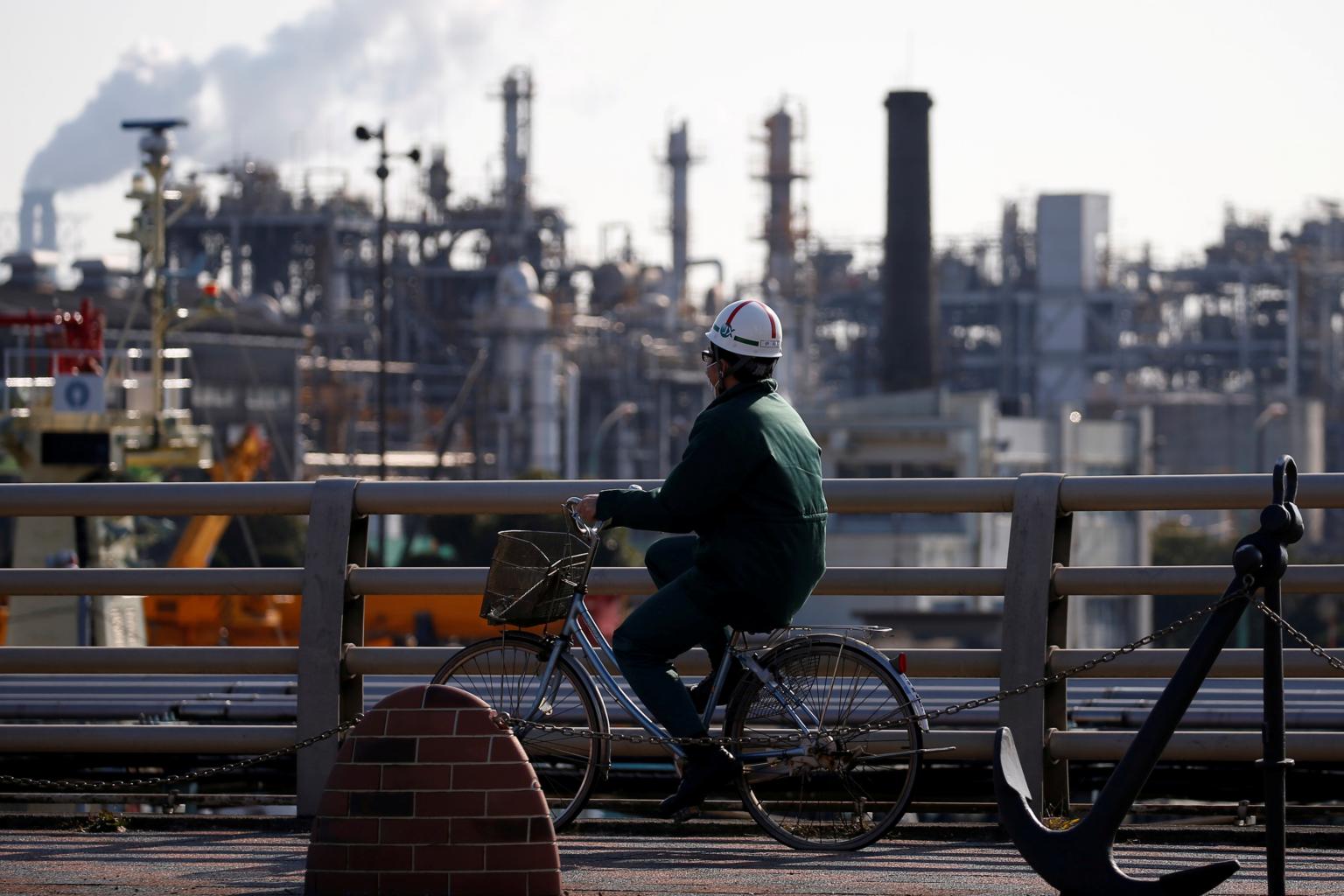Japan factory output posts biggest fall in almost 2 years
Sign up now: Get ST's newsletters delivered to your inbox

Factory production dropped 4.2 per cent from a month earlier, the most since early 2018.
PHOTO: REUTERS
Follow topic:
TOKYO (REUTERS) - Japan's industrial output slipped at the fastest pace since early last year in October, exposing widening cracks in the economy which faces a decline in domestic and foreign demand.
Factory output fell 4.2 per cent in October from the previous month, trade ministry data showed on Friday (Nov 29), below the median market forecast for a 2.1 per cent fall and swinging from a 1.7 per cent rise the previous month.
That matched a similar decline in January last year.
Manufacturers surveyed by the Ministry of Economy, Trade and Industry expect output to decline 1.5 per cent in November and rise 1.1 per cent in December, the data showed.
Production was pushed down by a decrease in output of passenger cars and car engines, as well as general purpose and production machinery, the data showed.
The decline in autos production has raised concerns that the government's sales tax hike last month will have a more sustained impact on demand for cars and car parts.
"It is increasingly likely that there will be negative growth (in the fourth quarter)," said Takeshi Minami, chief economist at Norinchukin Research Institute.
"Domestic demand is growing worse," he said, adding that there appears to be a strong hit from the sales tax, which was raised to 10 per cent from 8 per cent.
The weak reading follows other gloomy data released this week that may further fuel calls on the government to craft a large stimulus package to keep the country's economic recovery intact.
Official data on Thursday showed retail sales plunged at their fastest pace since early 2015 in October following the twice-postponed tax hike, boding ill for domestic demand.
The hit to consumption from the tax hike was also exacerbated by a powerful typhoon that swept across eastern and central Japan last month.
A government official said output was negatively impacted by temporary shutdowns of factories due to the typhoon and slowing production of big-ticket items following the tax hike.
A silver lining in the data came from a 0.9 per cent increase on the previous month in electronic parts and devices, which also saw inventories rise 8.8 per cent, suggesting firms may be preparing for an upturn in the IT cycle, although production in this sector tends to be volatile.
Minami at Norinchukin Research Institute said that it is too early to say whether a sustained pickup in electronic parts' production will spread to the broader economy even as Asia-bound exports of such parts increase.
However, factory activity and the broader economy are likely to remain under pressure as weak manufacturers' confidence, soft retail consumption and a delayed pickup in global growth hit demand.
Japan's decision to implement the sales tax hike is seen as a crucial to repairing the industrial world's largest public debt, which is more than twice the size of its US$5 trillion economy.
But under the Bank of Japan's current accommodative monetary policy, lawmakers could also step up calls for increased fiscal spending with financing costs extremely low.
Meanwhile, Japan's jobless rate and jobs-to-applicants ratio held steady in October, separate official data showed on Friday, suggesting the nation's tightest jobs market in decades is holding up.
The seasonally adjusted unemployment rate was steady at 2.4 per cent, matching economists' median forecast, figures from the Ministry of Internal Affairs and Communications showed.
The jobs-to-applicants ratio held steady at 1.57 in October from the previous month, health ministry data showed.

